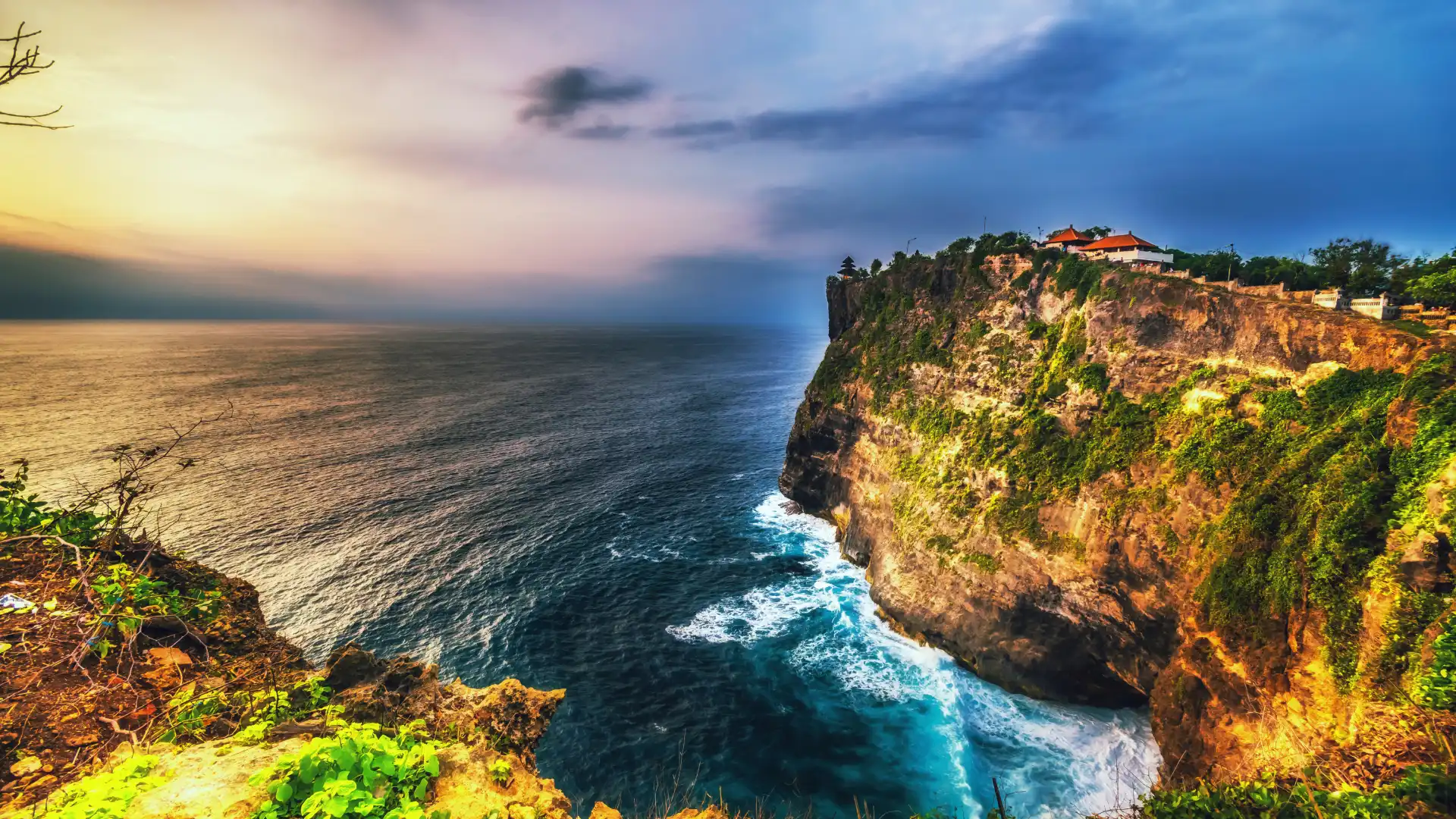Bali, Indonesia, is renowned for its rich cultural heritage, stunning landscapes, and spiritual sanctuaries. Among the island’s many treasures, Uluwatu Temple stands as a testament to the island’s deep-rooted spirituality and breathtaking natural beauty. Perched dramatically on a clifftop overlooking the Indian Ocean, Uluwatu Temple, also known as Pura Luhur Uluwatu, is a mesmerizing destination that combines ancient history, stunning views, and captivating performances. In this article, we will take you on a journey to explore the grandeur and allure of Uluwatu Temple.
A Temple by the Sea
Uluwatu Temple is one of Bali’s six key sea temples, strategically located along the island’s southwestern coastline to protect it from malevolent sea spirits. Its clifftop location, approximately 70 meters (230 feet) above the Indian Ocean, provides not only a sense of spiritual significance but also breathtaking panoramic views of the sea, making it one of Bali’s most picturesque temple complexes.
The Legends of Uluwatu
As with many Balinese temples, Uluwatu Temple is steeped in mythology. According to local legend, the temple was founded by the revered sage Mpu Kuturan during the 10th century. The temple’s name, “Uluwatu,” is derived from “ulu,” meaning “top,” and “watu,” meaning “stone” or “rock.” Together, they symbolize the temple’s location on a high clifftop.
Another prominent legend associated with Uluwatu Temple is that of Kebo Iwa, a supernatural creature known as a “buta” who is said to have constructed the temple. The story of Kebo Iwa reflects the profound connection between Balinese culture, spirituality, and the island’s unique mythology.
Architectural Beauty
Uluwatu Temple is a striking example of traditional Balinese architecture. The black coral rock used in its construction contrasts beautifully with the lush greenery of the surrounding landscape and the deep blue of the ocean below. The temple’s inner sanctum is off-limits to non-believers, but the outer courtyard and panoramic clifftop vistas are open for exploration.
Kecak Dance Performances
One of the most captivating aspects of Uluwatu Temple is its daily Kecak dance performances, which take place against the backdrop of the setting sun. These mesmerizing performances, narrating episodes from the Hindu epic Ramayana, feature a chorus of chanting men who create a hypnotic soundscape. The dance unfolds with dramatic fire dances and intricate movements, making it an enchanting cultural experience.
Visiting Tips
- Attire: When visiting Uluwatu Temple, it’s essential to dress respectfully. Visitors are required to wear sarongs and sashes, which are provided at the entrance.
- Timing: The best time to visit Uluwatu Temple is in the late afternoon to enjoy the sunset Kecak dance performance. However, it can get crowded, so arrive early to secure a good spot.
- Caution: Beware of the resident monkeys, who are known to be quite mischievous. Keep your belongings secure and avoid carrying food or shiny objects that may attract their attention.
Uluwatu Temple is a captivating blend of natural beauty, cultural significance, and spiritual devotion. Its clifftop setting overlooking the Indian Ocean, combined with the mesmerizing Kecak dance performances, creates an enchanting atmosphere that lingers long after you leave. As one of Bali’s most iconic and cherished landmarks, Uluwatu Temple invites travelers to connect with the island’s rich heritage and immerse themselves in its captivating legends and awe-inspiring vistas. A visit to Uluwatu Temple is not just a journey into Balinese history; it’s a spiritual and cultural odyssey that leaves a lasting impression.






